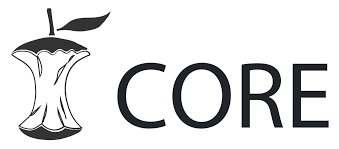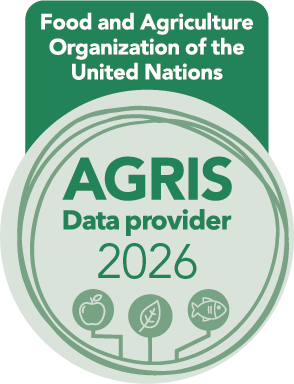Antagonistic Capacity of Trichoderma harzianum Rifai against Fungal Pathogen Sclerotium oryzae (Catt.)
DOI:
https://doi.org/10.5281/zenodo.7867853Keywords:
concentration, inhibition, action mechanisms, SclerotiumAbstract
Context: The antagonistic capacity of Trichoderma harzianum Rifai against fungal pathogen Sclerotium oryzae (Catt.) strain A-34, and the action mechanisms against the fungal pathogen of Sclerotium oryzae (Catt.), which caused crop losses.
Aim: To evaluate the antagonistic capacity of Trichoderma harzianum Rifai against the fungal pathogen Sclerotium oryzae (Catt.).
Methods: The concentration of spores/ml-1, the viability and mycelia growth inhibition of the pathogen, and the antagonistic capacity of Trichoderma harzianum, through the action mechanisms. The results were processed using SPSS, version 22.0, for Windows, and Tukey’s test results had a 0.05% probability. A completely randomized experimental design was used for each pathogenic fungus.
Results: No antibiosis was observed at 24 hours because the antagonistic did not inhibit pathogen growth; at 72 hours, there was hyphal interaction between S. oryzae and T. harzianum, and there was no mycoparasitism by the antagonist. S. oryzae grew more than the antagonistic at 96 hours, and at 120 hours, the antagonistic grew more than S. oryzae; therefore, no antagonistic or hyper-parasitic activity were observed in the pathogen.
Conclusions: The antagonist did not affect the mycelial growth of S. oryzae during the dual challenge. Likewise, T. harzianum (strain A-34) showed no antagonistic activity against Sclerotium oryzae, with a negative inhibition percent of Radial Growth, seen through antibiosis and the action mechanisms.
Downloads
References
Bell, D.K., Well, H.D., & Markham, C.R. (1982). In vitro antagonism of Trichoderma species against sixfungal plant pathogens. Phytopathology 72, 379-382. https://www.apsnet.org/publications/phytopathology/backissues/Documents/1982Articles/Phyto72n04_379.PDF
Castañeda, C., Mercad, Y., Téllez, A., Mendoza, A., & Anducho, M. (2017). Efectos benéficos de Trichoderma y su regulación de la expresión génica de celulasas y hemicelulasas. En F. Trejo, (eds.), Ciencias Biológicas y de la Salud. (pp. 36-55). Proceedings - ©ECORFAN. https://www.ecorfan.org/proceedings/PCBS_TI/PCBS_4.pdf
Correa-Victoria, F. (2007). Complejo Ácaro – Hongo - Bacteria del arroz. Centro Internacional de Agricultura Tropical (CIAT). https://docplayer.es/19588383-Complejo-acaro-hongo-bacteria-del-arroz-fernando-correa-victoria-centro-internacional-de-agricultura-tropical-ciat.html
Duarte-Leal, Y., Lamz-Piedra, A., & Martínez-Coca, B. (2017). Antagonismo in vitro de aislamientos de Trichoderma asperellum Samuels, Lieckfeldt & Nirenberg frente a Sclerotium rolfsii Sacc. Revista de Protección Vegetal, 32(3), 00-00. http://scielo.sld.cu/pdf/rpv/v32n3/rpv03317.pdf
Garrido Rondoy, M., & Vilela Severino, N. (2019). Capacidad antagónica de Trichoderma harzianum frente a Rhizoctonia, Nakatea sigmoidea y Sclerotium rolfsii y su efecto en cepas nativas de Trichoderma aisladas de cultivos de arroz. Scientia Agropecuaria, 10(2), 199-206. http://www.scielo.org.pe/pdf/agro/v10n2/a06v10n2.pdf
Krause, R. A., & Webster, R. K. (1972). Sclerotial Production, Viability Determination and Quantitative Recovery of Sclerotium Oryzae From Soil. Mycologia, 64(6), 1333-1337. https://doi.org/10.1080/00275514.1972.12019385
LaagriculturaDigital.com (2019). En el año 2019 se alcanzará la cosecha de cereales más alta de la historia de la humanidad, según las previsiones de la FAO. En Canales Sectoriales. Interempresas. Grandes Cultivos. https://www.interempresas.net/Grandes-cultivos/Articulos/264843-En-ano-2019-alcanzara-cosecha-cereales-mas-alta-historia-humanidad-segun-previsiones-FAO.html
Lerch, G. (1977). La experimentación en las ciencias biológicas y agrícolas. Editorial Científico Técnica.
Martínez, B., Infante, D., & Reyes, Y. (2013). Trichoderma spp. y su función en el control de plagas en los cultivos. Revista de Protección Vegetal, 28(1), 1-11. http://scielo.sld.cu/pdf/rpv/v28n1/rpv01113.pdf
Michel-Aceves, A. C., Otero-Sánchez M. A., Ariza-Flores, R., Barrios-Ayala, A., & Alarcón-Cruz, N. (2013). Eficiencia biológica de cepas nativas de Trichoderma spp., en el control de Sclerotium rolfsii Sacc., en cacahuate. Avances en Investigación Agropecuaria, Universidad de Colima, México, 17 (3), 89-107. http://ww.ucol.mx/revaia/portal/pdf/2013/sept/7.pdf
Monreal, P. (2019). Las estadísticas y la producción de alimentos en Cuba: ¿Un arroz “saltón”? En Progreso Semanal. https://progresosemanal.us/20191205/las-estadisticas-y-la-produccion-de-alimentos-en-cuba-un-arroz-salton/
Oficina Nacional de Estadísticas e Información (ONEI). (2018). Agricultura Ganadería Silvicultura Pesca. En Anuario Estadístico de Cuba 2017. Autor. www.onei.gob.cu/sites/default/files/aec2017.zip
Oficina Nacional de Estadísticas e Información (ONEI). (2019). Agricultura Ganadería Silvicultura Pesca. En Anuario Estadístico de Cuba 2018. Autor. http://www.onei.gob.cu/sites/default/files/aec_2019_0.pdf
Osorio, E., Hernández, F.D., Rodríguez, R., Varela, S.E., Estrada, B., & López, J.A. (2016). Actividad antagónica de Trichoderma spp. Sobre Rhizoctonia solani invitro. Investigación y Ciencia, 24(67), 5-11. https://www.redalyc.org/pdf/674/67446178001.pdf
Pérez Torres, E, J., Bernal, A., Milanés, P., Leiva, M., Sierra, Y., & Cupull, R. (2017). Actividad antagónica de Trichoderma harzianum Rifai sobre el agente causal del tizón del arroz (Pyricularia grisea Sacc.). Centro Agrícola, 44(3), 13-19. http://cagricola.uclv.edu.cu/descargas/pdf/V44-Numero_3/cag02317.pdf
Pérez Torres, E. J. (2016). Efecto de Trichoderma harzianum Rifai (cepa a-34) y sus filtrados decultivo en el control de tres hongos fitopatógenos foliares en arroz. (Síntesis de Tesis en opción al grado científico de Doctor en Ciencias Agrícolas). Revista de Protección Vegetal, 31(2). http://scielo.sld.cu/pdf/rpv/v31n2/rpv14216.pdf
Pérez, A., Hermosa, R., & Monte, E. (2017). Trichoderma Biocontrol Activity Against Plant Pathogenic Ascomycetes. FarmaJournal, 2(1), 85-93. https://gredos.usal.es/bitstream/handle/10366/133695/Actividades_de_biocontrol_de_Trichoderma.pdf;jsessionid=16EA3B025ADA2FC6443A8D96501E9EB2?sequence=1
Pérez-Torres, E., Bernal-Cabrera, A., Milanés-Virelles, P., Sierra-Reyes, Y., Leiva-Mora, M., Marín-Guerra, S., y Monteagudo-Hernández, O. (2018). Eficiencia de Trichoderma harzianum (cepa a-34) y sus filtrados en el control de tres enfermedades fúngicas foliares en arroz. Bioagro, 30(1). http://ve.scielo.org/scielo.php?script=sci_arttext&pid=S1316-33612018000100002
Quesada-Mola, Y., Fernández - Gonzáles, E., Casanueva - Medina, K., Ponce - Grijuela, E., & Márquez - Gutiérrez, M. E. (2019). Actividad biológica de nuevas cepas cubanas de Trichoderma spp. efectivas en el control de Meloidogyne incognita (Kofoid y White) Chitwood. Revista Cubana de Ciencias Biológicas, 7(1), 1-9. http://www.rccb.uh.cu/index.php/RCCB/article/download/214/323
Reyes, Y., Martínez, B., & Infante, D. (2008). Evaluación de la actividad antagónica de trece aislamientos de Trichoderma spp. sobre Rhizoctonia spp. Revista de Protección Vegetal, 23(2), 112-117. http://scielo.sld.cu/pdf/rpv/v23n2/rpv08208.pdf
Rincón, A., Leguizamón, J., & Arbeláez, G. (1992). Control biológico de Rhizoctonia solani con Trichoderma spp. en semilleros de café. Cenicafé, 43(3), 73-83.
Samaniego, J. A., Ulloa, M., & Herrera, T. (1989). Hongos del suelo antagonistas de Phymatotrichum omnivorum. Rev. Mex. Fitopatología, 7(1), 86-95.
Tarr, S. (1964). CMI Descriptions of Pathogenic Fungi and Bacteria, Commonwealth Mycological Institute, Kew (1964), Set I (sheets 1–10) and Set 2 (sheets 11–20). [formato electrónico] Transactions of the British Mycological Society, 47(3), 464-472. https://www.cabi.org/ISC/abstract/19771330102
Downloads
Published
Issue
Section
License

This work is licensed under a Creative Commons Attribution-NonCommercial-NoDerivatives 4.0 International License.
You are free to:
- Share — copy and redistribute the material in any medium or format
- The licensor cannot revoke these freedoms as long as you follow the license terms.
Under the following terms:
- Attribution — You must give appropriate credit , provide a link to the license, and indicate if changes were made . You may do so in any reasonable manner, but not in any way that suggests the licensor endorses you or your use.
- NonCommercial — You may not use the material for commercial purposes .
- NoDerivatives — If you remix, transform, or build upon the material, you may not distribute the modified material.
- No additional restrictions — You may not apply legal terms or technological measures that legally restrict others from doing anything the license permits.







